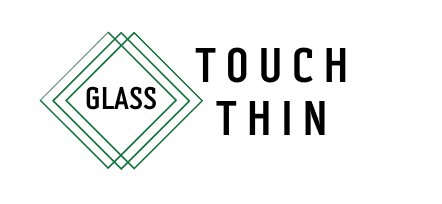One-way mirror glass, also known as one-way mirror, one-way vision glass, clear mirror, or two-way mirror, is basically a mirror made of a thin and almost transparent material. One-way mirror glass is more effective when used with lights, if the lighting conditions between the two sides of the one-way vision glass are great enough, the darker side of the one-way mirror glass will be difficult to see from the brighter side. Usually, the mirror faces the place where the light source is strong, and the user will only see the image reflected by the glass; while the transmissive side faces the space where the light source is weak so that users can clearly observe every move of the user with the strong light source.
Tunnel Mirror
One-way perspective mirrors will be used in various scientific and technological facilities, such as tunnel mirrors in science and technology museums, scenic spots, etc. to increase the experience of tourists. The principle is to place two pieces of one-way vision glass mirrors facing inward, with a light source in the middle, relying on the repeated reflection of the light sources to achieve a deep effect.
One-way mirror glass is the main component of tunnel mirrors.
Product Description(Customized thickness & dimension)
Product Thickness
5mm 6mm
Product Size
2440*1830mm
ONE-WAY VISION GLASS
1. Features: one-way vision glass, also known as one-way perspective glass or one-way mirror glass, is a kind of glass with special optical properties.
ITS MAIN FEATURES ARE AS FOLLOWS:
- Optical properties: one-way vision glass has excellent optical properties, which can achieve moderate scattering of light, reduce the intensity of light, and avoid glare while ensuring light transparency.
- Safety: High safety, its surface hardness is high, and its impact resistance is good, which can effectively prevent damage caused by accidental impact.
- Weather resistance: Good weather resistance and can resist the erosion of wind, frost, rain, snow and other harsh weather, and is suitable for various environmental conditions.
- Easy to clean: The surface of single-view glass is smooth and stains are not easy to adhere, making it easy to clean and maintain, and it is helpful to maintain the clarity of the mirror surface.
- Decoration: Good decorative effect, can increase the layering and three-dimensionality of the space, and is suitable for decoration needs in various occasions.
- Privacy protection: one-way vision glass has the characteristics of one-way perspective. When you look at it from one side, you can see a clear image; while when you look at it from the other side, it presents a blurry effect, which helps protect privacy.
- Wide application: one-way vision glass is widely used in shopping malls, offices, bathrooms, kitchens and other places, which can not only meet lighting needs but also protect privacy.
To sum up, one-way mirror glass has the characteristics of excellent optical performance, safety, weather resistance, easy cleaning, decoration, privacy protection and a wide range of applications.
When one-way vision glass is used with lighting, the effect is more obvious. Usually, the mirror (reflective surface) faces the place where the light source is strong, and the user will only see his or her own image reflected by the glass; the transmission surface faces the place where the light source is weak. you can clearly observe every move of users in a space with strong light sources.
APPLICATION SCENARIO:
- one-way vision glass is most common in interrogation halls and is used for surveillance
- It is also used in medical institutions, courts, conference halls, fitting rooms, karaoke and even unmanned stores, etc.
- In addition, one-way mirror glass are also widely used as tunnel mirrors in science and technology museums, scenic spots, etc. to increase tourists’ experience. The principle is to place two one-way vision glass mirrors facing inward, with a light source in the middle, and rely on the light sources to repeatedly reflect each other to achieve a profound effect.
Our one-way vision glass is coated on plain white glass. The process mainly includes the following steps.
MANUFACTURING STEPS:
- Cleaning: First, clean the plain white glass strictly to remove oil, dust and other impurities on the surface to ensure the smooth progress of the coating process.
- Pretreatment: The cleaned glass surface needs to be pretreated, which usually includes chemical etching, physical wiping and other methods to improve the activity of the glass surface and facilitate the adhesion of the coating layer.
- Coating: Apply a special metal or inorganic material film on the pre-treated glass surface. This process usually uses vacuum coating technology. Vacuum coating evaporates and sputters metal or inorganic materials onto the glass surface in a high vacuum environment to form a uniform, transparent film.
- Curing: After the coating is completed, the film needs to be cured to tightly bond with the glass surface to improve durability. The curing process usually includes high-temperature baking, ultraviolet irradiation and other methods.
- Inspection: one-way vision glass after curing needs to undergo strict quality inspection to ensure that its optical performance, safety, weather resistance and other aspects meet the standards.
- Cutting and installation: According to actual needs, single perspective glass is cut and installed to make it suitable for various application scenarios.
In short, the process of coating single-perspective glass on plain glass mainly includes cleaning, pretreatment, coating, curing, inspection and installation. Through this process, a thin film with excellent optical properties, safety and weather resistance is formed on the surface of plain white glass, making it a special glass with privacy protection functions.
